



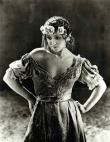
1 August
 The Unknown (Dir. Tod Browning, US, 1927) (Screening format – 35mm, 69 mins) To escape the police, Alonzo, who has two thumbs on one hand, poses in a sideshow as an armless wonder. He falls in love with Estrellita, and when detected by her father, he kills him. Then, discovering that the girl abhors the touch of a man’s hand, he has both his arms amputated. Returning, he finds to his dismay that she has fallen in love with Malabar, the strong-man. Is all lost for Alonzo….The Unknown was the sixth of ten collaborations between Chaney and director Tod Browning. Its circus theme was a favorite of Browning’s, both on and off screen. Chaney was already “The Man of a Thousand Faces” when he appeared in The Unknown but in this film Chaney didn’t need to rely on heavy make-up to transform himself for a role. For The Unknown, Chaney reported, “I contrived to make myself look like an armless man, not simply to shock and horrify you but merely to bring to the screen a dramatic story of an armless man.” Find out more at moviessilently.com . With live piano accompaniment. BFI Southbank, London Link
The Unknown (Dir. Tod Browning, US, 1927) (Screening format – 35mm, 69 mins) To escape the police, Alonzo, who has two thumbs on one hand, poses in a sideshow as an armless wonder. He falls in love with Estrellita, and when detected by her father, he kills him. Then, discovering that the girl abhors the touch of a man’s hand, he has both his arms amputated. Returning, he finds to his dismay that she has fallen in love with Malabar, the strong-man. Is all lost for Alonzo….The Unknown was the sixth of ten collaborations between Chaney and director Tod Browning. Its circus theme was a favorite of Browning’s, both on and off screen. Chaney was already “The Man of a Thousand Faces” when he appeared in The Unknown but in this film Chaney didn’t need to rely on heavy make-up to transform himself for a role. For The Unknown, Chaney reported, “I contrived to make myself look like an armless man, not simply to shock and horrify you but merely to bring to the screen a dramatic story of an armless man.” Find out more at moviessilently.com . With live piano accompaniment. BFI Southbank, London Link
2 August
 Dawson City – Frozen Time (Dir. Bill Morrison, US, 2016) This documentary pieces together the bizarre true story of a collection of some 500 films dating from 1910s – 1920s, which were lost for over 50 years until discovered buried in a sub-arctic swimming pool deep in the Yukon Territory, in Dawson City, located about 350 miles south of the Arctic Circle. Using these permafrost protected, rare silent films and newsreels, archival footage, interviews and historical photographs to tell the story, and accompanied by an enigmatic score by Sigur Rós collaborator and composer Alex Somers (Captain Fantastic), Dawson City: Frozen Time depicts a unique history of a Canadian gold rush town by chronicling the life cycle of a singular film collection through its exile, burial, rediscovery, and salvation – and through that collection, how a First Nation hunting camp was transformed and displaced. Find out more at picturepalacepictures.com . Screen, St Ives Link
Dawson City – Frozen Time (Dir. Bill Morrison, US, 2016) This documentary pieces together the bizarre true story of a collection of some 500 films dating from 1910s – 1920s, which were lost for over 50 years until discovered buried in a sub-arctic swimming pool deep in the Yukon Territory, in Dawson City, located about 350 miles south of the Arctic Circle. Using these permafrost protected, rare silent films and newsreels, archival footage, interviews and historical photographs to tell the story, and accompanied by an enigmatic score by Sigur Rós collaborator and composer Alex Somers (Captain Fantastic), Dawson City: Frozen Time depicts a unique history of a Canadian gold rush town by chronicling the life cycle of a singular film collection through its exile, burial, rediscovery, and salvation – and through that collection, how a First Nation hunting camp was transformed and displaced. Find out more at picturepalacepictures.com . Screen, St Ives Link
3 August
 Sherlock Jnr (Dir. Buster Keaton, 1924) (Screening format – not known, 45 mins) In Sherlock Jr, a kindly movie projectionist (Buster Keaton) longs to be a detective. When his fiancée (Kathryn McGuire) is robbed by a local thief (Ward Crane), the poor projectionist is framed for the crime. Using his amateur detective skills, the projectionist follows the thief to the train station – only to find himself locked in a train car. Disheartened, he returns to his movie theatre, where he falls asleep and dreams that he is the great Sherlock Holmes. Although not a popular success on its initial release, the film has come to be recognised as a Keaton classic with its special effects and elaborate stunts making it a landmark in motion picture history. Find out more at silentfilm.org. With recorded score. Tyneside Cinema, Newcastle Link
Sherlock Jnr (Dir. Buster Keaton, 1924) (Screening format – not known, 45 mins) In Sherlock Jr, a kindly movie projectionist (Buster Keaton) longs to be a detective. When his fiancée (Kathryn McGuire) is robbed by a local thief (Ward Crane), the poor projectionist is framed for the crime. Using his amateur detective skills, the projectionist follows the thief to the train station – only to find himself locked in a train car. Disheartened, he returns to his movie theatre, where he falls asleep and dreams that he is the great Sherlock Holmes. Although not a popular success on its initial release, the film has come to be recognised as a Keaton classic with its special effects and elaborate stunts making it a landmark in motion picture history. Find out more at silentfilm.org. With recorded score. Tyneside Cinema, Newcastle Link
3 – 4 August (3 Screenings)
Pandora’s Box (Dir. G W Pabst, Ger, 1929) (Screening format – not known, 135mins) Based on two plays by the German author Frank Wedekind, Erdgeist (Earth Spirit, 1895), which Pabst himself had directed for the stage, and Die Büchse der Pandora (Pandora’s Box, 1904), the silent drama follows the tumultuous life of the showgirl Lulu whose unselfconscious sexuality brings about the ruin of all those that fall for her and eventually her own. In a daring move, 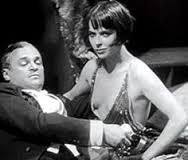 Pabst chose a little known American actress over the more experienced Marlene Dietrich for the part of Lulu, a decision that made the young Louise Brooks an international star. Her innocent looks paired with her natural erotic allure and sense of movement – Brooks was also a dancer – perfectly matched Pabst’s idea of his heroine as unwitting seductress. Subjected to cuts to eliminate some of its “scandalous” content and unfavourably reviewed by critics at the time, it is now considered one of the boldest and most modern films of the Weimar era highlighting Pabst’s command of camera language and montage. Find out more at silentlondon.co.uk . With recorded soundtrack. Film Theatre, Glasgow Link
Pabst chose a little known American actress over the more experienced Marlene Dietrich for the part of Lulu, a decision that made the young Louise Brooks an international star. Her innocent looks paired with her natural erotic allure and sense of movement – Brooks was also a dancer – perfectly matched Pabst’s idea of his heroine as unwitting seductress. Subjected to cuts to eliminate some of its “scandalous” content and unfavourably reviewed by critics at the time, it is now considered one of the boldest and most modern films of the Weimar era highlighting Pabst’s command of camera language and montage. Find out more at silentlondon.co.uk . With recorded soundtrack. Film Theatre, Glasgow Link
4 August
 Pandora’s Box (Dir. G W Pabst, Ger, 1929) (Screening format – not known, 135mins) For film details see 3-4 August above. With recorded soundtrack. The Poly, Falmouth Link
Pandora’s Box (Dir. G W Pabst, Ger, 1929) (Screening format – not known, 135mins) For film details see 3-4 August above. With recorded soundtrack. The Poly, Falmouth Link
5 August
Pandora’s Box (Dir. G W Pabst, Ger, 1929) (Screening format – not known, 135mins) For film details see 3-4 August above. With recorded soundtrack. Electric Cinema, Birmingham Link
Pandora’s Box (Dir. G W Pabst, Ger, 1929) (Screening format – not known, 135mins) For film details see 3-4 August above. With recorded soundtrack. Regent Street Cinema, London Link
Pandora’s Box (Dir. G W Pabst, Ger, 1929) (Screening format – not known, 135mins) For film details see 3-4 August above. With recorded soundtrack. MAC, Birmingham Link
6 August
 The Unknown (Dir. Tod Browning, US, 1927) (Screening format – 35mm, 69 mins) To escape the police, Alonzo, who has two thumbs on one hand, poses in a sideshow as an armless wonder. He falls in love with Estrellita, and when detected by her father, he kills him. Then, discovering that the girl abhors the touch of a man’s hand, he has both his arms amputated. Returning, he finds to his dismay that she has fallen in love with Malabar, the strong-man. Is all lost for Alonzo….The Unknown was the sixth of ten collaborations between Chaney and director Tod Browning. Its circus theme was a favorite of Browning’s, both on and off screen. Chaney was already “The Man of a Thousand Faces” when he appeared in The Unknown but in this film Chaney didn’t need to rely on heavy make-up to transform himself for a role. For The Unknown, Chaney reported, “I contrived to make myself look like an armless man, not simply to shock and horrify you but merely to bring to the screen a dramatic story of an armless man.” Find out more at moviessilently.com . With live piano accompaniment. BFI Southbank, London Link
The Unknown (Dir. Tod Browning, US, 1927) (Screening format – 35mm, 69 mins) To escape the police, Alonzo, who has two thumbs on one hand, poses in a sideshow as an armless wonder. He falls in love with Estrellita, and when detected by her father, he kills him. Then, discovering that the girl abhors the touch of a man’s hand, he has both his arms amputated. Returning, he finds to his dismay that she has fallen in love with Malabar, the strong-man. Is all lost for Alonzo….The Unknown was the sixth of ten collaborations between Chaney and director Tod Browning. Its circus theme was a favorite of Browning’s, both on and off screen. Chaney was already “The Man of a Thousand Faces” when he appeared in The Unknown but in this film Chaney didn’t need to rely on heavy make-up to transform himself for a role. For The Unknown, Chaney reported, “I contrived to make myself look like an armless man, not simply to shock and horrify you but merely to bring to the screen a dramatic story of an armless man.” Find out more at moviessilently.com . With live piano accompaniment. BFI Southbank, London Link
7 August
 Sherlock Jnr (Dir. Buster Keaton, 1924) + shorts (Screening format – not known, 90 mins) In Sherlock Jr, a kindly movie projectionist (Buster Keaton) longs to be a detective. When his fiancée (Kathryn McGuire) is robbed by a local thief (Ward Crane), the poor projectionist is framed for the crime. Using his amateur detective skills, the projectionist follows the thief to the train station – only to find himself locked in a train car. Disheartened, he returns to his movie theatre, where he falls asleep and dreams that he is the great Sherlock Holmes. Although not a popular success on its initial release, the film has come to be recognised as a Keaton classic with its special effects and elaborate stunts making it a landmark in motion picture history. Find out more at silentfilm.org. Presented by Lucky Dog Picture House. With world premier of live score from The Lucky Dog Cinema Band. Wilton’s Music Hall, London Link
Sherlock Jnr (Dir. Buster Keaton, 1924) + shorts (Screening format – not known, 90 mins) In Sherlock Jr, a kindly movie projectionist (Buster Keaton) longs to be a detective. When his fiancée (Kathryn McGuire) is robbed by a local thief (Ward Crane), the poor projectionist is framed for the crime. Using his amateur detective skills, the projectionist follows the thief to the train station – only to find himself locked in a train car. Disheartened, he returns to his movie theatre, where he falls asleep and dreams that he is the great Sherlock Holmes. Although not a popular success on its initial release, the film has come to be recognised as a Keaton classic with its special effects and elaborate stunts making it a landmark in motion picture history. Find out more at silentfilm.org. Presented by Lucky Dog Picture House. With world premier of live score from The Lucky Dog Cinema Band. Wilton’s Music Hall, London Link
8 August
 L’Age d’or (Dir. Luis Bunuel, Fr, 1930) (Screening format – 35mm, 63mins) More than 80 years on, this masterpiece of cinematic surrealism remains as brilliantly witty and shocking as ever. Uniting the genius of Luis Buñuel and Salvador Dali, L’Age d’Or is a uniquely savage blend of visual poetry and social commentary. A sinister yet poignant chronicle of a couple’s struggle to consummate their desire but repeatedly frustrated in their efforts by the combined forces of the church, the law and bourgeois convention – the film was banned and vilified for many years for its subversive eroticism and furious dissection of ‘civilised’ values. Find out more at sensesofcinema.com. Introduced by BFI Programmer-at-Large Geoff Andrew. With recorded score. BFI Southbank, London Link
L’Age d’or (Dir. Luis Bunuel, Fr, 1930) (Screening format – 35mm, 63mins) More than 80 years on, this masterpiece of cinematic surrealism remains as brilliantly witty and shocking as ever. Uniting the genius of Luis Buñuel and Salvador Dali, L’Age d’Or is a uniquely savage blend of visual poetry and social commentary. A sinister yet poignant chronicle of a couple’s struggle to consummate their desire but repeatedly frustrated in their efforts by the combined forces of the church, the law and bourgeois convention – the film was banned and vilified for many years for its subversive eroticism and furious dissection of ‘civilised’ values. Find out more at sensesofcinema.com. Introduced by BFI Programmer-at-Large Geoff Andrew. With recorded score. BFI Southbank, London Link
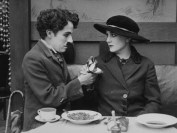 Charlie Chaplin: Short Comedies including The Immigrant (Dir, Charles Chaplin, US, 1917) and One A.M. (Dir. Charles Chaplin, US, 1916) (Screening format – not known, 90mins) In The Immigrant, newly arrived immigrant Chaplin struggles to pay for a meal with his new found lady friend while in One A.M., Charlie Chaplin is the drunken homeowner having a difficult time getting in to his own home after arriving back late at night. Presented by Lucky Dog Picture House. With the world premier of LIVE score by pianist Christopher Eldred and percussionist Nicholas D. Ball of The Lucky Dog Picture House. Wilton’s Music Hall, London Link
Charlie Chaplin: Short Comedies including The Immigrant (Dir, Charles Chaplin, US, 1917) and One A.M. (Dir. Charles Chaplin, US, 1916) (Screening format – not known, 90mins) In The Immigrant, newly arrived immigrant Chaplin struggles to pay for a meal with his new found lady friend while in One A.M., Charlie Chaplin is the drunken homeowner having a difficult time getting in to his own home after arriving back late at night. Presented by Lucky Dog Picture House. With the world premier of LIVE score by pianist Christopher Eldred and percussionist Nicholas D. Ball of The Lucky Dog Picture House. Wilton’s Music Hall, London Link
9 August
 Safety Last (Dir. Fred C Newmeyer/Sam Taylor, US, 1923) (Screening format – not known, 73mins) A boy (Harold Lloyd) moves to New York City to make enough money to support his loving girlfriend (Mildred Davis), but soon discovers that making it in the big city is harder than it looks. When he hears that a store manager will pay $1,000 to anyone who can draw people to his store, he convinces his friend, the “human fly,” (Bill Strother) to climb the building and split the profit with him. But when his pal gets in trouble with the law, he must complete the crazy stunt on his own. The image of Harold Lloyd hanging desperately from the hands of a skyscraper clock during Safety Last! is one of the great icons of film history (although it was achieved with a certain amount of film trickery) and this remains one of the best and best loved comedies of the silent era. Find out more at rogerebert.com. Presented by Lucky Dog Picture House. With the world premier of a new live score by pianist Tom Marlow of The Lucky Dog Picture House. Wilton’s Music Hall, London Link
Safety Last (Dir. Fred C Newmeyer/Sam Taylor, US, 1923) (Screening format – not known, 73mins) A boy (Harold Lloyd) moves to New York City to make enough money to support his loving girlfriend (Mildred Davis), but soon discovers that making it in the big city is harder than it looks. When he hears that a store manager will pay $1,000 to anyone who can draw people to his store, he convinces his friend, the “human fly,” (Bill Strother) to climb the building and split the profit with him. But when his pal gets in trouble with the law, he must complete the crazy stunt on his own. The image of Harold Lloyd hanging desperately from the hands of a skyscraper clock during Safety Last! is one of the great icons of film history (although it was achieved with a certain amount of film trickery) and this remains one of the best and best loved comedies of the silent era. Find out more at rogerebert.com. Presented by Lucky Dog Picture House. With the world premier of a new live score by pianist Tom Marlow of The Lucky Dog Picture House. Wilton’s Music Hall, London Link
10 August
 Sherlock Jnr (Dir. Buster Keaton, 1924) + shorts (Screening format – not known, 90 mins) In Sherlock Jr, a kindly movie projectionist (Buster Keaton) longs to be a detective. When his fiancée (Kathryn McGuire) is robbed by a local thief (Ward Crane), the poor projectionist is framed for the crime. Using his amateur detective skills, the projectionist follows the thief to the train station – only to find himself locked in a train car. Disheartened, he returns to his movie theatre, where he falls asleep and dreams that he is the great Sherlock Holmes. Although not a popular success on its initial release, the film has come to be recognised as a Keaton classic with its special effects and elaborate stunts making it a landmark in motion picture history. Find out more at silentfilm.org. Presented by Lucky Dog Picture House. With world premier of live score from The Lucky Dog Cinema Band. Wilton’s Music Hall, London Link
Sherlock Jnr (Dir. Buster Keaton, 1924) + shorts (Screening format – not known, 90 mins) In Sherlock Jr, a kindly movie projectionist (Buster Keaton) longs to be a detective. When his fiancée (Kathryn McGuire) is robbed by a local thief (Ward Crane), the poor projectionist is framed for the crime. Using his amateur detective skills, the projectionist follows the thief to the train station – only to find himself locked in a train car. Disheartened, he returns to his movie theatre, where he falls asleep and dreams that he is the great Sherlock Holmes. Although not a popular success on its initial release, the film has come to be recognised as a Keaton classic with its special effects and elaborate stunts making it a landmark in motion picture history. Find out more at silentfilm.org. Presented by Lucky Dog Picture House. With world premier of live score from The Lucky Dog Cinema Band. Wilton’s Music Hall, London Link
11 August
 Battleship Potemkin (Dir. Sergei Eisenstein, 1925) (Screening format – DCP, 75mins) Considered one of the most important films in the history of silent pictures, as well as possibly Eisenstein’s greatest work, Battleship Potemkin brought Eisenstein’s theories of cinema art to the world in a powerful showcase; his emphasis on montage, his stress of intellectual contact, and his treatment of the mass instead of the individual as the protagonist. The film tells the story of the mutiny on the Russian ship Prince Potemkin during the 1905 uprising.Their mutiny was short-lived, however, as during their attempts to get the population of Odessa to join the uprising, soldiers arrived and laid waste to the insurgents. Battleship Potemkin is a work of extraordinary pictorial beauty and great elegance of form. It is symmetrically broken into five movements or acts. In the first of these, “Men and Maggots,” the flagrant mistreatment of the sailors at the hands of their officers is demonstrated, while the second, “Drama on the Quarterdeck,” presents the actual mutiny and the ship’s arrival in Odessa. “Appeal from the Dead” establishes the solidarity of the citizens of Odessa with the mutineers. It is the fourth sequence, “The Odessa Steps,” which depicts the massacre of the citizens, that thrust Eisenstein and his film into the historical eminence that both occupy today. It is unquestionably the most famous sequence of its kind in film history, and Eisenstein displays his legendary ability to convey large-scale action scenes. The shot of the baby carriage tumbling down the long staircase has been re-created in many films. The sequence’s power is such that the film’s conclusion, “Meeting the Squadron,” in which the Potemkin in a show of brotherhood is allowed to pass through the squadron unharmed, is anticlimactic. Find out more at classicartfilms.com. With recorded soundtrack. Irish Film Institute, Dublin Link
Battleship Potemkin (Dir. Sergei Eisenstein, 1925) (Screening format – DCP, 75mins) Considered one of the most important films in the history of silent pictures, as well as possibly Eisenstein’s greatest work, Battleship Potemkin brought Eisenstein’s theories of cinema art to the world in a powerful showcase; his emphasis on montage, his stress of intellectual contact, and his treatment of the mass instead of the individual as the protagonist. The film tells the story of the mutiny on the Russian ship Prince Potemkin during the 1905 uprising.Their mutiny was short-lived, however, as during their attempts to get the population of Odessa to join the uprising, soldiers arrived and laid waste to the insurgents. Battleship Potemkin is a work of extraordinary pictorial beauty and great elegance of form. It is symmetrically broken into five movements or acts. In the first of these, “Men and Maggots,” the flagrant mistreatment of the sailors at the hands of their officers is demonstrated, while the second, “Drama on the Quarterdeck,” presents the actual mutiny and the ship’s arrival in Odessa. “Appeal from the Dead” establishes the solidarity of the citizens of Odessa with the mutineers. It is the fourth sequence, “The Odessa Steps,” which depicts the massacre of the citizens, that thrust Eisenstein and his film into the historical eminence that both occupy today. It is unquestionably the most famous sequence of its kind in film history, and Eisenstein displays his legendary ability to convey large-scale action scenes. The shot of the baby carriage tumbling down the long staircase has been re-created in many films. The sequence’s power is such that the film’s conclusion, “Meeting the Squadron,” in which the Potemkin in a show of brotherhood is allowed to pass through the squadron unharmed, is anticlimactic. Find out more at classicartfilms.com. With recorded soundtrack. Irish Film Institute, Dublin Link
 Pandora’s Box (Dir. G W Pabst, Ger, 1929) (Screening format – not known, 135mins) For film details see 3-4 August above. With recorded soundtrack. Presented as part of the Chichester Festival. Chichester Cinema, Chichester Link
Pandora’s Box (Dir. G W Pabst, Ger, 1929) (Screening format – not known, 135mins) For film details see 3-4 August above. With recorded soundtrack. Presented as part of the Chichester Festival. Chichester Cinema, Chichester Link
12 August
 City Lights (Dir. Charlie Chaplin, US, 1931) (Screening format – DCP, 84mins) Subtitled ‘A Comedy in Pantomime’, City Lights is viewed by many as Chaplin’s greatest film – a ‘silent film’ released three years into the talkie era. The melodramatic film, a combination of pathos, slapstick and comedy, was a tribute to the art of body language and pantomime – a lone hold-out against the assault of talking film. The writer-director-star achieved new levels of grace, in both physical comedy and dramatic poignancy, with this silent tale of a lovable vagrant falling for a young blind woman who sells flowers on the street (a magical Virginia Cherrill) and mistakes him for a millionaire. Though this Depression-era smash was made after the advent of sound, Chaplin remained steadfast in his love for the expressive beauty of the pre-talkie form. The result was the epitome of his art and the crowning achievement of silent comedy. Find out more at rogerebert.com. With recorded soundtrack. Irish Film Institute, Dublin Link
City Lights (Dir. Charlie Chaplin, US, 1931) (Screening format – DCP, 84mins) Subtitled ‘A Comedy in Pantomime’, City Lights is viewed by many as Chaplin’s greatest film – a ‘silent film’ released three years into the talkie era. The melodramatic film, a combination of pathos, slapstick and comedy, was a tribute to the art of body language and pantomime – a lone hold-out against the assault of talking film. The writer-director-star achieved new levels of grace, in both physical comedy and dramatic poignancy, with this silent tale of a lovable vagrant falling for a young blind woman who sells flowers on the street (a magical Virginia Cherrill) and mistakes him for a millionaire. Though this Depression-era smash was made after the advent of sound, Chaplin remained steadfast in his love for the expressive beauty of the pre-talkie form. The result was the epitome of his art and the crowning achievement of silent comedy. Find out more at rogerebert.com. With recorded soundtrack. Irish Film Institute, Dublin Link
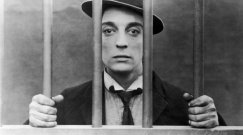 Buster Keaton Triple-Bill Funday. Celebrate the genius of director and star Buster Keaton with a triple bill of brilliant slapstick comedy, introduced by young programmer Keaton Leigh. From an out-of-his depth student attempting to create a fully automated home in The Electric House (1922, 22min), and a man accidentally sent up in a hot air balloon in The Balloonatic (1923, 22min), to a classic case of mistaken identity in Cops (1922, 18min), Keaton’s deadpan charm and timeless invention will have you rolling in the aisles. With live piano accompaniment. BFI Southbank, London Link
Buster Keaton Triple-Bill Funday. Celebrate the genius of director and star Buster Keaton with a triple bill of brilliant slapstick comedy, introduced by young programmer Keaton Leigh. From an out-of-his depth student attempting to create a fully automated home in The Electric House (1922, 22min), and a man accidentally sent up in a hot air balloon in The Balloonatic (1923, 22min), to a classic case of mistaken identity in Cops (1922, 18min), Keaton’s deadpan charm and timeless invention will have you rolling in the aisles. With live piano accompaniment. BFI Southbank, London Link
 L’Age d’or (Dir. Luis Bunuel, Fr, 1930) (Screening format – 35mm, 63mins) More than 80 years on, this masterpiece of cinematic surrealism remains as brilliantly witty and shocking as ever. Uniting the genius of Luis Buñuel and Salvador Dali, L’Age d’Or is a uniquely savage blend of visual poetry and social commentary. A sinister yet poignant chronicle of a couple’s struggle to consummate their desire but repeatedly frustrated in their efforts by the combined forces of the church, the law and bourgeois convention – the film was banned and vilified for many years for its subversive eroticism and furious dissection of ‘civilised’ values. Find out more at sensesofcinema.com. With recorded score. BFI Southbank, London Link
L’Age d’or (Dir. Luis Bunuel, Fr, 1930) (Screening format – 35mm, 63mins) More than 80 years on, this masterpiece of cinematic surrealism remains as brilliantly witty and shocking as ever. Uniting the genius of Luis Buñuel and Salvador Dali, L’Age d’Or is a uniquely savage blend of visual poetry and social commentary. A sinister yet poignant chronicle of a couple’s struggle to consummate their desire but repeatedly frustrated in their efforts by the combined forces of the church, the law and bourgeois convention – the film was banned and vilified for many years for its subversive eroticism and furious dissection of ‘civilised’ values. Find out more at sensesofcinema.com. With recorded score. BFI Southbank, London Link
14 August
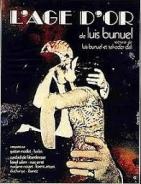 L’Age d’or (Dir. Luis Bunuel, Fr, 1930) (Screening format – 35mm, 63mins) More than 80 years on, this masterpiece of cinematic surrealism remains as brilliantly witty and shocking as ever. Uniting the genius of Luis Buñuel and Salvador Dali, L’Age d’Or is a uniquely savage blend of visual poetry and social commentary. A sinister yet poignant chronicle of a couple’s struggle to consummate their desire but repeatedly frustrated in their efforts by the combined forces of the church, the law and bourgeois convention – the film was banned and vilified for many years for its subversive eroticism and furious dissection of ‘civilised’ values. Find out more at sensesofcinema.com. With recorded score. BFI Southbank, London Link
L’Age d’or (Dir. Luis Bunuel, Fr, 1930) (Screening format – 35mm, 63mins) More than 80 years on, this masterpiece of cinematic surrealism remains as brilliantly witty and shocking as ever. Uniting the genius of Luis Buñuel and Salvador Dali, L’Age d’Or is a uniquely savage blend of visual poetry and social commentary. A sinister yet poignant chronicle of a couple’s struggle to consummate their desire but repeatedly frustrated in their efforts by the combined forces of the church, the law and bourgeois convention – the film was banned and vilified for many years for its subversive eroticism and furious dissection of ‘civilised’ values. Find out more at sensesofcinema.com. With recorded score. BFI Southbank, London Link
20 August
Pandora’s Box (Dir. G W Pabst, Ger, 1929) (Screening format – not known, 135mins) For film details see 3-4 August above. With recorded soundtrack. Saffron Screen, Saffron Waldon Link
24 August
 Vampyr (Dir. Carl Theodore Dreyer, 1932) (Screening format – not known, 75mins) Technically, Dryer’s first sound film but with very little dialogue and extensive use made of inter-titles) Staying at a country inn, Allan Grey scoffs at the notion of supernatural death before being forced to believe that there may be things beyond his understanding. The skills of director and cameraman induce a similar confusion on the part of those watching,
Vampyr (Dir. Carl Theodore Dreyer, 1932) (Screening format – not known, 75mins) Technically, Dryer’s first sound film but with very little dialogue and extensive use made of inter-titles) Staying at a country inn, Allan Grey scoffs at the notion of supernatural death before being forced to believe that there may be things beyond his understanding. The skills of director and cameraman induce a similar confusion on the part of those watching, 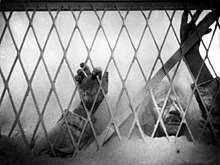 as we encounter one of cinema’s great nightmares. Dreyer offers few explanations for the phenomena on screen: strange and frightening things may just happen. Vampyr opened to a generally negative reception from audiences and critics. Dreyer edited the film after its German premiere and it opened to more mixed opinions at its French debut. The film was long considered a low point in Dreyer’s career, but modern critical reception to the film has become much more favorable with critics praising the film’s disorienting visual effects and atmosphere. Find out more at wikipedia.org Presented as part of the Chichester Festival. With live organ accompaniment by Ben Hall. Chichester Cinema, Chichester Link
as we encounter one of cinema’s great nightmares. Dreyer offers few explanations for the phenomena on screen: strange and frightening things may just happen. Vampyr opened to a generally negative reception from audiences and critics. Dreyer edited the film after its German premiere and it opened to more mixed opinions at its French debut. The film was long considered a low point in Dreyer’s career, but modern critical reception to the film has become much more favorable with critics praising the film’s disorienting visual effects and atmosphere. Find out more at wikipedia.org Presented as part of the Chichester Festival. With live organ accompaniment by Ben Hall. Chichester Cinema, Chichester Link
26 August
 Pandora’s Box (Dir. G W Pabst, Ger, 1929) (Screening format – not known, 135mins) For film details see 3-4 August above. With recorded soundtrack. Chapter Film, Cardiff Link
Pandora’s Box (Dir. G W Pabst, Ger, 1929) (Screening format – not known, 135mins) For film details see 3-4 August above. With recorded soundtrack. Chapter Film, Cardiff Link
28 August
Pandora’s Box (Dir. G W Pabst, Ger, 1929) (Screening format – not known, 135mins) For film details see 3-4 August above. With recorded soundtrack. Chapter Film, Cardiff Link
NB. Whilst every effort has been taken to ensure that the information contained in these listings is accurate, silentfilmcalendar.org can take no responsibility for any errors or inaccuracies. You are strongly advised to confirm with the venue that the event remains as detailed, particularly if traveling any distance to attend.
